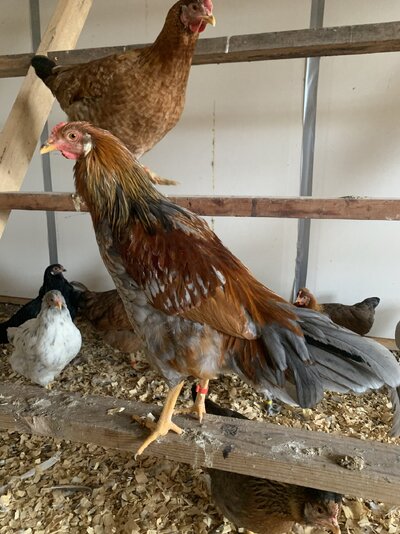I’m just curious….
we have a barred rock rooster (and a recently discovered EE rooster). Along with our roosters we have EE hens, lavender Orpingtons, jubilee Orpingtons, cream legbars, Swedish flower, and salmon faveroles. Since it is a possibility that we may end Up with babies one day, I’m just wondering what the outcomes might be. I know that, obviously, anything EE can have any look. And also that the lavenders would breed black with the barred rock. I’m not really curious on the EE roo as, again, they can throw anything. I know that they would all be barnyard mixes. Just wondering if anyone has pictures of any of the remainder combinations. And if not, if you know what they might look like. Like, would the BR roo and jubilee hen throw barred, jubilee, or solid feathering? Again, not planning on breeding. Just wondering what might happen if they were able to sneak some babies. Also, I’m not too good with genetic terms, so if you could explain in layman’s terms, I would greatly appreciate it. Thank you in advanced to everyone that comments!
we have a barred rock rooster (and a recently discovered EE rooster). Along with our roosters we have EE hens, lavender Orpingtons, jubilee Orpingtons, cream legbars, Swedish flower, and salmon faveroles. Since it is a possibility that we may end Up with babies one day, I’m just wondering what the outcomes might be. I know that, obviously, anything EE can have any look. And also that the lavenders would breed black with the barred rock. I’m not really curious on the EE roo as, again, they can throw anything. I know that they would all be barnyard mixes. Just wondering if anyone has pictures of any of the remainder combinations. And if not, if you know what they might look like. Like, would the BR roo and jubilee hen throw barred, jubilee, or solid feathering? Again, not planning on breeding. Just wondering what might happen if they were able to sneak some babies. Also, I’m not too good with genetic terms, so if you could explain in layman’s terms, I would greatly appreciate it. Thank you in advanced to everyone that comments!






